3 Trends Impacting Connected Operations and How Site Visibility Can Help
February 26, 2021
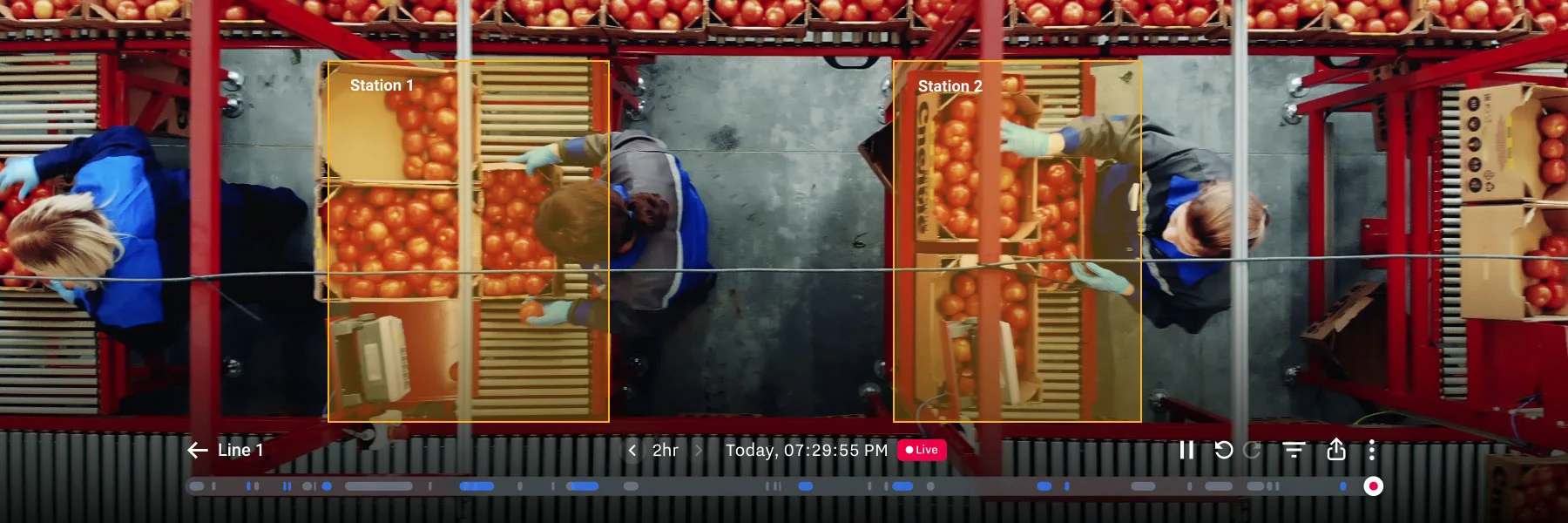
Businesses today are facing a significant shift in their requirements for safety, efficiency, and visibility across their operations. Some of these demands were quickened by the events of 2020, but many were emerging trends over the past few years that are now fully taking hold:
Demand for real-time data: The rise of e-commerce—and the effect it has had on customer expectations—is putting intense pressure on modern operations, requiring more real-time data and visibility.
Shift from in-person to remote work: Technology has made it possible to manage operations remotely more efficiently. Accelerated by the COVID-19 pandemic, this trend has disrupted industries which previously relied on in-person, line-of-site management.
Increased focus on safety and security: Over the past few years (and especially in 2020), many businesses faced new safety and security challenges. With AI-enabled technology, operators now have the ability to proactively monitor their worksites—even when no one is physically on site—to ensure assets are safe and secure.
Our Site Visibility and Data Science teams collaborated to discuss these three trends. Keep reading to learn more about how these trends are affecting connected operations—and how the Site Visibility solution we launched publicly last month can help equip your business for the future.
<div id="section-one">1. Demand for real-time data</div>
E-commerce has skyrocketed over the past few years, growing from just 0.8% of all U.S. retail in 2000 to more than 16% in 2020—a 20x increase in just 20 years, which has transformed customer expectations. The resulting "Amazon Effect" means that for businesses across the supply chain—whether or not they are directly involved in retail—real-time information is table stakes. To stay competitive, businesses must gain real-time visibility into their own operations from end to end, leveraging digital technology to provide timely information to their customers, make smarter decisions, respond to inquiries faster, and operate at the high levels of efficiency that today’s market demands.
The environment brought on by remote working and COVID-19 has only compounded this trend, which we have seen reflected in increased usage of Samsara’s Documents feature. This feature allows drivers to capture and upload important documents (like DVIRs, proofs of delivery, bills of lading, and more) to the cloud in real time, rather than having to wait hours or even days for paper documents to exchange hands. Among our customers in the food and beverage industry, for example, we saw a 30-40% increase in weekly documents submitted compared to the pre-COVID baseline. This increase in paperless document management illustrates how businesses are moving towards cloud-based data to meet today’s real-time information demands.
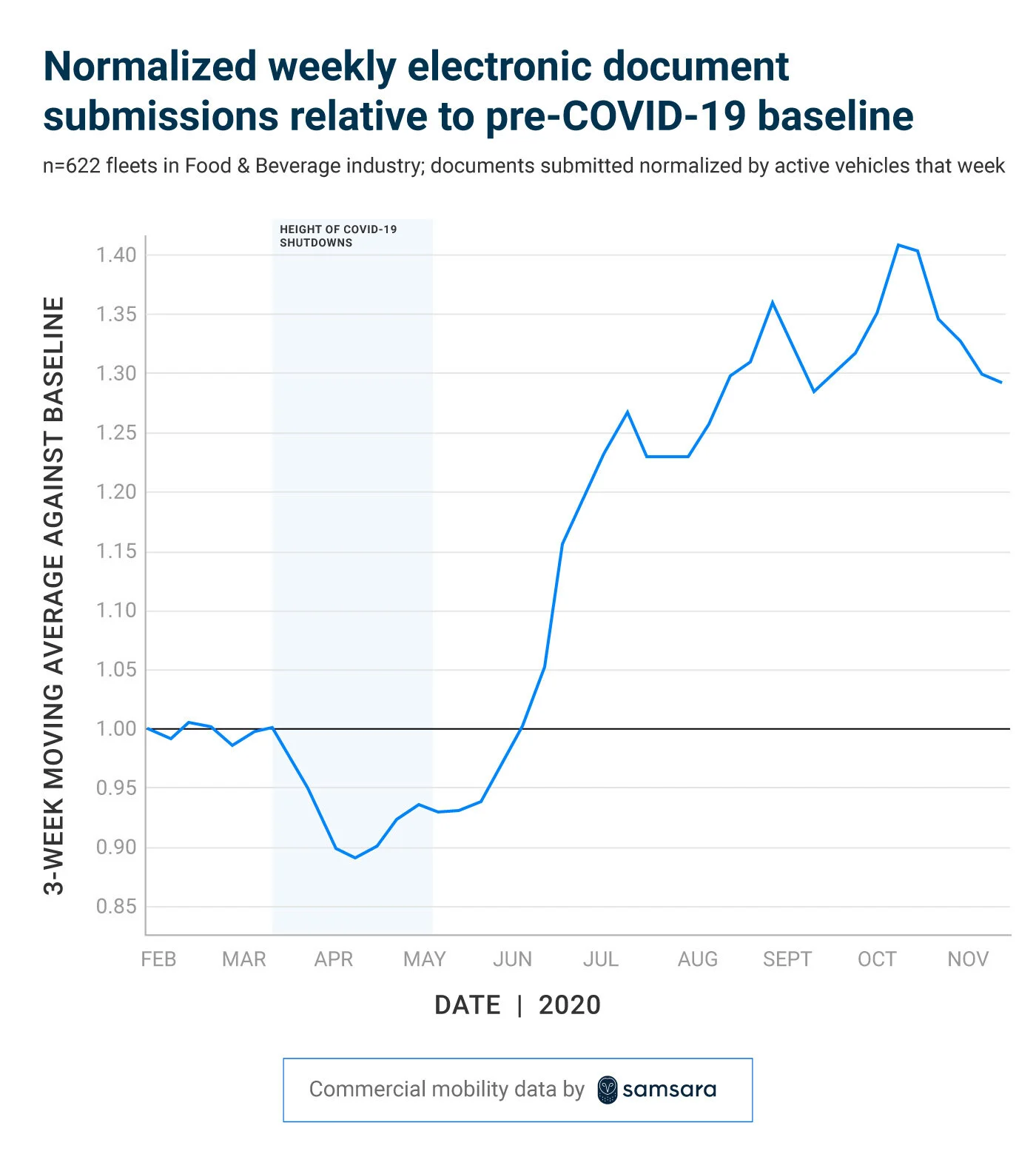
Another way operations managers are gaining real-time visibility is through Site Visibility, Samsara’s newest cloud-connected solution that brings the power of AI video to on-site facilities. Site Visibility is an advanced video management solution that offers powerful search features, intelligent detection tools, and proactive alerts—helping businesses gain more granular insights from their security camera footage, all within Samsara's integrated platform for end-to-end visibility of their entire operation.
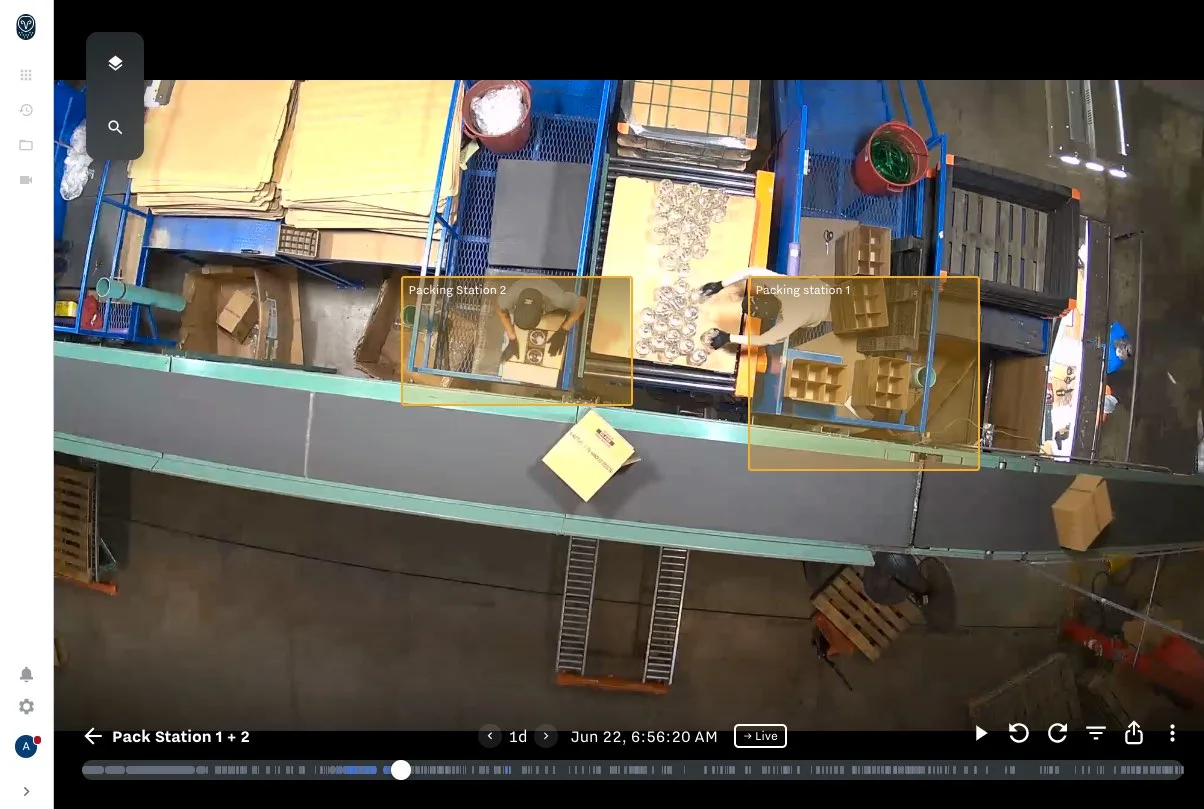
Logistics Warehouse, for example, is a transportation, product packaging, and warehousing business with more 600,000 square feet of warehousing space. With Site Visibility, they're now able to take a more proactive approach to daily floor activities. For instance, with Inactivity Alerts, they can define an area of interest on a camera stream in their Samsara dashboard and receive a real-time alert if there is downtime on their production line.
“We’re already seeing major improvements in efficiency,” said President Ronnie Robertson. After just seven months, Logistics Warehouse was able to optimize the way their production lines were being staffed and produce 45% more per day, increasing profit margins by 8% and better meeting their customers’ demands.
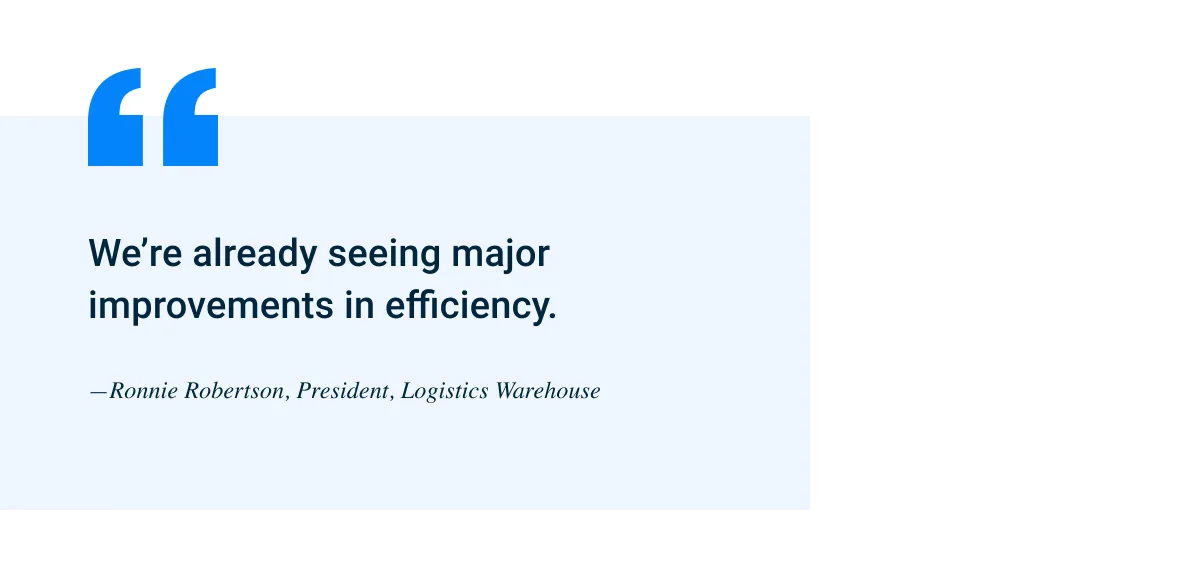
<div id="section-two">2. Shift from in-person to remote work</div>
Another trend that will continue to affect connected operations after the pandemic resolves (and for years to come) is the shift from in-person to remote work.
We can clearly see this trend in Samsara’s commercial transit data. When COVID-19 first hit in March 2020, there was a steep dropoff in miles driven across both the commercial transportation and passenger transit industries. But while most sectors in commercial transportation have bounced back, passenger transit—which represents mostly transit authorities, limo services, and work shuttles—remains depressed, reflecting the broader shift away from commuting to remote work.
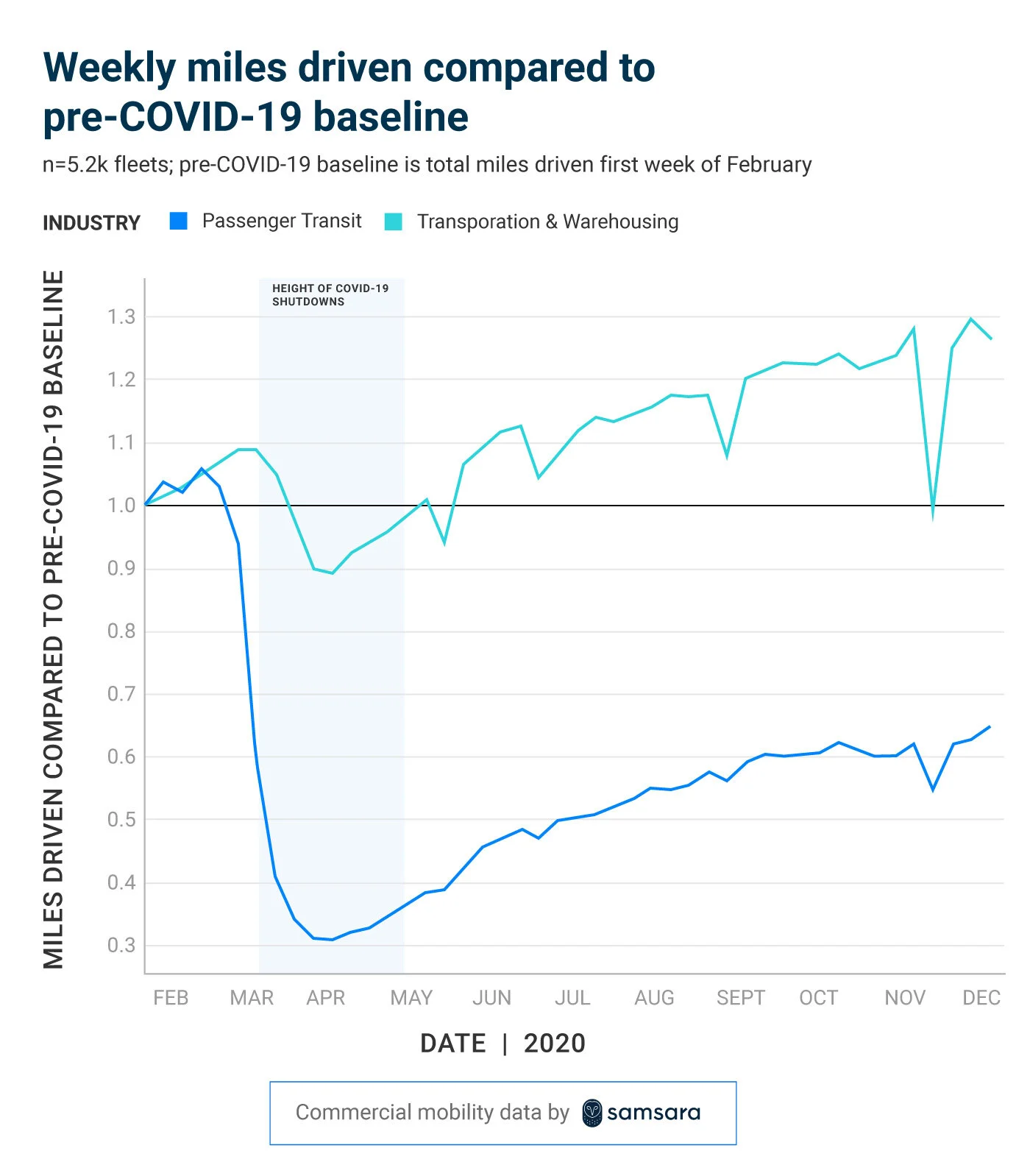
Although the COVID-19 pandemic certainly sparked this trend—and many employees will return to in-person work once vaccinated—we believe that in 2021 and beyond, all industries will have roles that are newly “remote-enabled” by technology.
“What I see on the horizon is a massive shift in the way businesses do business,” said Fred Matthews, Senior Manager of Safety at DHL. “This pandemic opened up business leaders’ mindsets to the possibilities of remote operations, and how we can work smarter with virtual tools. Remote viewing—whether that be through cameras in warehouses or vehicles, for example—is going to be a huge trend for safety and productivity.”
In many supply chain industries, on-premise safety coaching and line-of-site management used to be the norm. Now, many facilities managers are turning to new technologies, like Site Visibility, to observe operations at any time, from anywhere—enabling them to check in on their operations from home or from anywhere in the world.

Delta Constructors is a full-service oil and gas provider with a dozen locations across North America. Delta was previously using a legacy camera system that was inflexible, difficult to manage, and could only be accessed from a single on-premise monitor. Director of IT Aaron Schilling would frequently spend hours sifting through footage—and he couldn’t share any findings with executives unless they were physically present.
After implementing Samsara’s cloud-based Site Visibility technology, Schilling can now remotely monitor camera connectivity and on-site activities without having to travel anywhere. With Samsara’s online dashboard and mobile app, he can view live and historical camera streams from locations hundreds of miles apart—all within one or two clicks.
“With Site Visibility, I can be everywhere at one time, especially when working remotely,” said Schilling. “We can manage our equipment, fleet, and sites all from a single pane of glass. One application can view the whole company across three regions.”
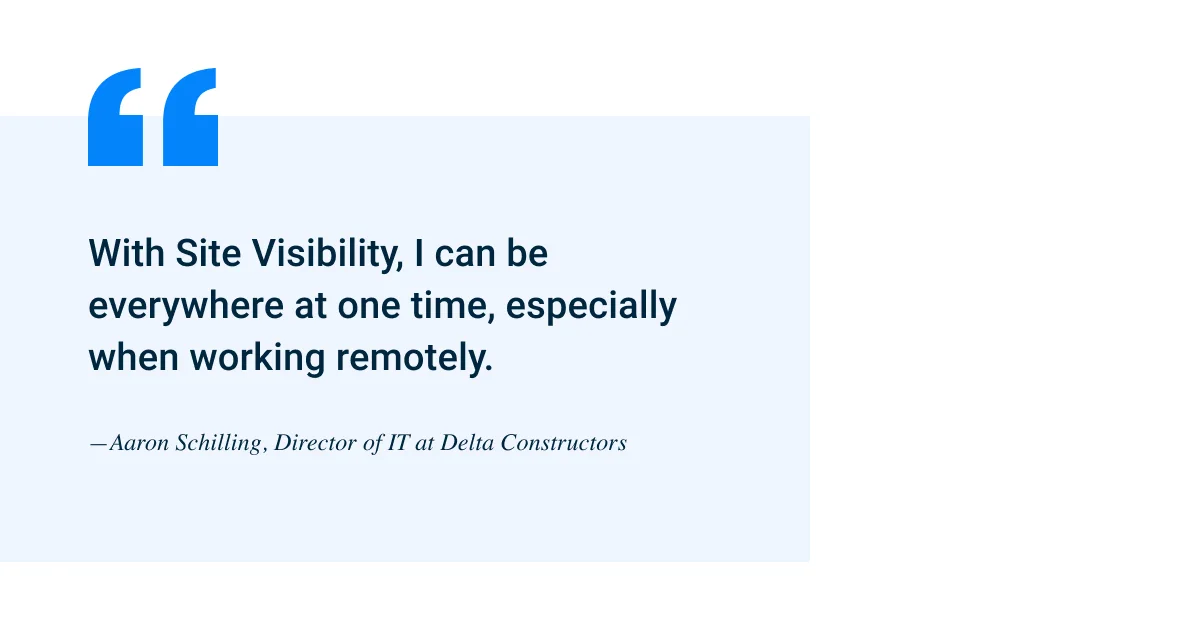
<div id="section-three">3. Increased focus on safety and security</div>
This year, many businesses faced new safety and security challenges. For example, we saw a record-breaking 15% commercial vacancy rate in mid-2020, almost twice the 9% commercial vacancy rate in 2019.
As a result, many businesses are radically adapting their operating protocols. Operational leaders need to ensure their assets are secure even when no one is present on site to monitor. And even after the COVID-19 pandemic ends, the need for remote safety and security monitoring will not diminish—at a basic level, after-hours and weekend monitoring is always needed to protect against theft and aid in incident investigation. Worksite safety and security will be a top priority for years to come.
Samsara’s cloud-based Site Visibility system with intelligent AI is a powerful solution for operators looking to know what’s happening onsite, both when there should and shouldn’t be activity present.
O’Neal Steel—one of the largest family-owned, full-line metal distributors in the United States—found that Site Visibility could help them streamline incident investigations. If they receive a text message alert that there was activity the night before, their supervisors can easily leverage people detection and other AI search features to find the footage in question within minutes. Once located, they can then share a link to the footage with their safety team, enabling them to investigate and act quickly.
“It’s very easy for authorized users to uncover the story quickly, no matter where they are, and share with relevant stakeholders,” said CTO Sateesh Donti. “We chose Samsara because we needed a reliable, secure, and modern security system.”
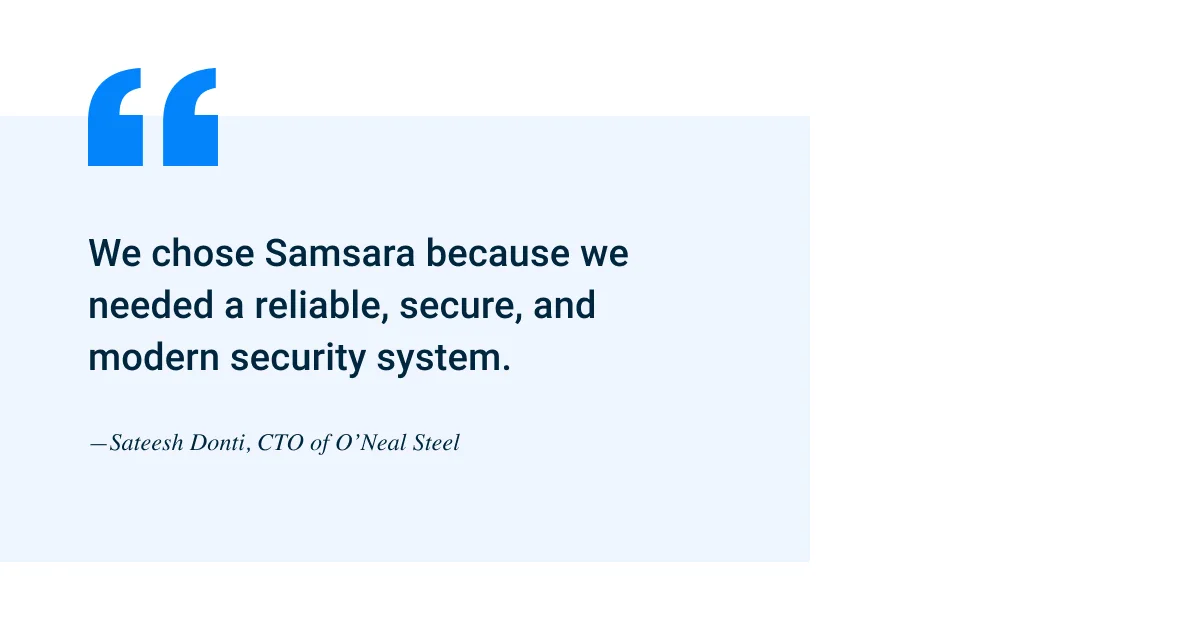
How can Site Visibility help equip your business for the future?
In this blog, we’ve discussed just a few of the trends impacting connected operations today—from the need for real-time data to the impact of remote work and an increased focus on site safety and security. Trusted by more than 20,000 customers, Samsara can be your technology partner for the road ahead, helping your business navigate this changing landscape and supporting your organization’s digital transformation.
Site Visibility is the latest addition to the Samsara connected operations platform, providing real-time visibility, intelligent search tools, proactive alerts for unusual activity, and more. All of this means you can run your operations from one integrated platform with a straightforward user experience.
Want to learn more about how Site Visibility can advance your security camera systems and reduce operational complexities? Check out our on-demand webinar to see Site Visibility in action or request a personalized demo to get started today.
<div class="text-left"><a id="blog-inline-1" href="/workforce/pricing" title="Get a demo" class="btn primary-btn btn--blue"">Get a demo</a></div><br>


